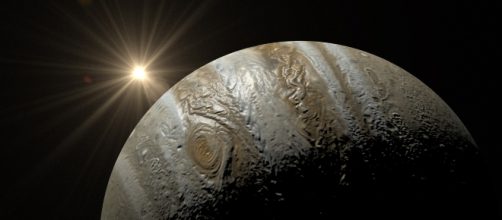NASA published a photo of Jupiter's Great Red Spot. So far, this is the closest any man-made spacecraft had been to the storm on the surface of the planet.
NASA opened the image to the public. Therefore anyone like students and scientists can process and use the picture as they deem fit.
Jupiter flyby
To capture such amazing image of the storm, Juno completed a close flyby to the planet. The image showed how big the storm is. Also, it had captured the full colors of the spot. With processing done by various scientists, more and more details of the storm are being revealed.
The swirling patterns on the storm are visible on the image. Some scientists were enamored by how mystifying yet beautiful the storm is. Jared Espley, NASA's Juno program scientist even said that the Great Red Spot is a natural work of art.
Close encounter
The flyby was completed last Monday, July 10. Juno was flying above Jupiter at 16,000 kilometers directly on top of the Great Red Spot. The spacecraft was about 9,000 kilometers above the planet's clouds and flew as close as 3,500 kilometers.
Juno, the $1 billion probe designed to observe the giant gas planet Jupiter was sent to orbit last year. It is tasked to gather data to understand the origin and composition of the planet. Scientists believe that to understand the evolution of the universe as well as the planet Earth, they will have to look into one of the oldest bodies in the Solar System and that's Jupiter.
Juno is currently observing the planet's magnetic field, radiation and the overall composition of the massive storm found on the surface of Jupiter.
The Great Red Spot
The storm, visible even from millions of miles away, remains a mystery to scientists. It exudes the color red making it more interesting to study. NASA is still trying to figure out why the storm emits the color red and what kind of energy causes the stirring pattern visible on the images were taken by Juno.
The spacecraft uses its state-of-the-art camera called JunoCam to take photographs of the planet and its surroundings. The images captured are then beamed back to Earth and are subjected to analysis. The rest of Juno's scientific instruments are focused on understanding the composition of the planet. The investigators are hoping to catch a glimpse of what's hiding underneath the planet's clouds.
Juno performs flybys over Jupiter every 53 days. The next one is scheduled for September 1. However, the orbit of both the spacecraft and the planet makes it difficult to catch the Great Red Spot again. This means it will be a long time before Juno passes by the storm again.
The primary purpose of the probe is to collate all findings from Juno's instruments to understand what's on the planet. Every flyby is vital to the study, since every time the spacecraft approaches the planet, scientists gain new knowledge that isn't available before.
I’m seeing spots! Check out #Jupiter’s #GreatRedSpot in these stunning citizen scientist-processed #JunoCam images https://t.co/FWLvPvIG9h pic.twitter.com/ej2bI9NlDK
— NASA's Juno Mission (@NASAJuno) 12 July 2017


